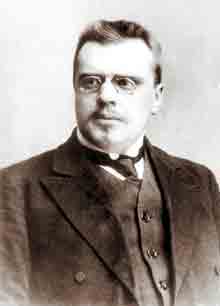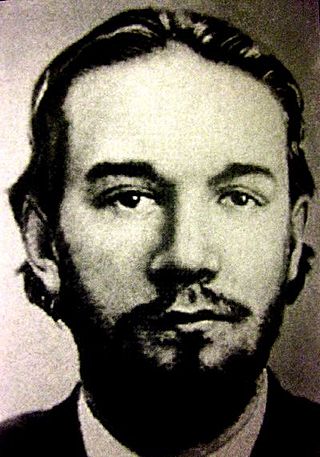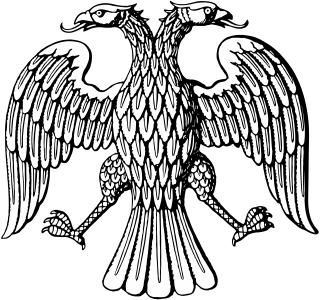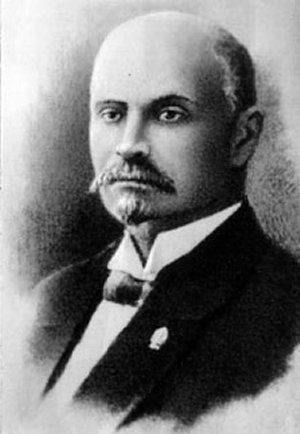History
Background
The seizure of power by the Bolshevik Party in Petrograd in the Russian Revolution of November 1917 was followed by the dispersal of the Russian Constituent Assembly early in the morning of January 19, 1918 (N.S.), a body which had been dominated by the elected representatives of the Party of Socialists-Revolutionaries (PSR), headed by Victor Chernov. This usurpation of authority by the Council of People's Commissars and the 2nd All-Russian Congress of Soviets did not spell the end of opposition to the Bolshevik regime, however.
In December 1917 elections were held to select a Siberian Regional Duma which was to be convened in the city of Tomsk. Owing to the revolutionary temper of the times, the middle class and the bourgeoisie had been excluded from the elections to this body, a decision which was hotly denounced by the centrist Constitutional Democratic Party (known as the K-D, or Kadets). [1] Additionally the Bolsheviks saw the Siberian effort as a thinly-veiled attempt to undermine the national sovereignty of their fledgling regime and refused to participate in the elections to this Siberian Regional Duma or to recognize the body's legitimacy. [1] With the Monarchist Right thus excluded, the Center undermined, and the Bolshevik Left boycotting, it was unsurprising that delegates elected to this Siberian regional parliament were dominated by members of Chernov's PSR. [2]
After a delay necessitated by the inability to assemble a quorum of elected representatives, on the night of January 28/29, 1918, some forty delegates finally succeeded in gathering in Tomsk to conduct their business. This body expeditiously elected a government known as the Provisional Siberian Government (PSG), under the chairmanship of a young Socialist-Revolutionary Piotr Derber. Of the PSG's twenty ministers, only six had been present at the founding meeting of January 28–29. Two had been in Bolshevik prison, and the rest were scattered throughout Siberia and north China and were chosen in absentia, without their prior consent. Some of them, including Derber, quickly fled to the Far East; others went into hiding.
On 1 June 1918, after the Revolt of the Czechoslovak Legion, the formation of the West Siberian Commissariat was announced. According to William Henry Chamberlin, "It derived its claim to authority from the Government, headed by a Socialist Revolutionary named Derber, which had been elected in February by the Siberian Regional Duma, a body which had been chosen on the basis of universal suffrage and which, like the Constituent Assembly, had been dispersed by the Bolsheviki." [3]
Derber didn't agree with this result and his PSG on the meeting at Vladivostok was renamed as Provisional Government of Autonomous Siberia (PGAS). PGAS and new PSG didn't recognize each other and claimed themselves as the only government of Siberia, but Derber's government didn't have armed forces. In a short time, Derber resigned and left Vladivostok; his successor was I.A.Lavrov from Socialist-Revolutionary Party.
In September 1918, the Pyotr Vologodsky, representing the Provisional All-Russian Government, traveled to Eastern Siberia according to Chamberlin, "...and obtained the abdication of the phantom Derber Cabinet in Vladivostok." [3] : 21

The Russian Civil War was a multi-party civil war in the former Russian Empire sparked by the overthrowing of the monarchy and the new republican government's failure to maintain stability, as many factions vied to determine Russia's political future. It resulted in the formation of the RSFSR and later the Soviet Union in most of its territory. Its finale marked the end of the Russian Revolution, which was one of the key events of the 20th century.

The Far Eastern Republic, sometimes called the Chita Republic, was a nominally independent state that existed from April 1920 to November 1922 in the easternmost part of the Russian Far East. Although theoretically independent, it largely came under the control of the Russian Soviet Federative Socialist Republic (RSFSR), which envisaged it as a buffer state between the RSFSR and the territories occupied by Japan during the Russian Civil War of 1917–1922. Its first president was Alexander Krasnoshchyokov.

The Committee of Members of the Constituent Assembly was an anti-Bolshevik government that operated in Samara, Russia, during the Russian Civil War of 1917–1922. It formed on June 8, 1918, after the Czechoslovak Legion had occupied the city.

Viktor Mikhailovich Chernov was a Russian revolutionary and one of the founders of the Russian Socialist-Revolutionary Party. He was the primary party theoretician or the 'brain' of the party, and was more of an analyst than a political leader. Following the February Revolution of 1917, Chernov was Minister for Agriculture in the Russian Provisional Government and advocating immediate land reform. Later on, he was Chairman of the Russian Constituent Assembly.

Viktor Nikolayevich Pepelyayev was a Russian politician, a supporter of Admiral Alexander Kolchak, and the Chairman of the Council of Ministers of the State of Russia.

Siberian regionalism is a political movement that advocates for the formation of an autonomous Siberian state. The idea originated in the mid-19th century and reached a high tide with the White movement military activities of Aleksandr Kolchak (1874–1920) and Viktor Pepelyayev (1885–1920) during the Russian Civil War of 1917–1922.

Vladimir Mikhailovich Zenzinov was a member of Russia's Socialist-Revolutionary Party, a participant of the First (1905), Second, and Third Russian Revolutions, and an author of a number of books.

Andrei Aleksandrovich Argunov was a Russian revolutionary political activist and one of the leaders of the Socialist-Revolutionary Party.

Nikolai Dimitrovich Avksentyev was a leading member of the Socialist-Revolutionary Party (PSR). He was one of the 'Heidelberg SRs', like Vladimir Zenzinov. These SRs were influenced by neo-Kantian philosophy and Marxism. As Chairman of the Provisional All-Russian Government, he headed the Russian state from September 23 to November 18, 1918. He was overthrown and arrested by the Minister of War, Alexander Kolchak, who proclaimed himself the Supreme ruler of Russia.

Abram Rafailovich Gots was a Russian Socialist-Revolutionary leader, active in the Revolutions of 1905 and 1917.

The Popular Socialist Party emerged in Russia in the early twentieth century.

Osip Solomonovich Minor was a Russian revolutionary and member of the Socialist-Revolutionary Party.

The Siberian Army was an anti-Bolshevik army during the Russian Civil War, which fought from June 1918 – July 1919 in Siberia – Ural Region.

The Provisional Siberian Government was a short-lived government in Siberia created by the White movement in 1918.

The left-wing uprisings against the Bolsheviks, known in anarchist literature as the Third Russian Revolution, were a series of rebellions, uprisings, and revolts against the Bolsheviks by oppositional left-wing organizations and groups that started soon after the October Revolution, continued through the years of the Russian Civil War, and lasted into the first years of Bolshevik rule of the Soviet Union. They were led or supported by left-wing groups such as some factions of the Socialist Revolutionary Party, Left Socialist-Revolutionaries, Mensheviks, and anarchists. Generally, the uprisings began in 1918 because of the Bolshevik assault on Soviet democracy, the signing of the Treaty of Brest-Litovsk, and opposition to Bolshevik socioeconomic policy. The Bolsheviks grew increasingly hard-line during the decisive and brutal years following the October Revolution. These rebellions and insurrections occurred mostly during and after the Russian Civil War, until around 1924, though there did exist various small-scale insurgencies until World War II.

The All Russian Constituent Assembly was a constituent assembly convened in Russia after the October Revolution of 1917. It met for 13 hours, from 4 p.m. to 5 a.m., 18–19 January [O.S. 5–6 January] 1918, whereupon it was dissolved by the All-Russian Central Executive Committee, making the Third All-Russian Congress of Soviets the new governing body of Russia.

The Socialist Revolutionary Party, or the Party of Socialist-Revolutionaries, was a major political party in late Imperial Russia, and both phases of the Russian Revolution and early Soviet Russia.
An index of articles related to the Russian Revolution and the Russian Civil War period (1905–1922). It covers articles on topics, events, and persons related to the revolutionary era, from the 1905 Russian Revolution until the end of the Russian Civil War. The See also section includes other lists related to Revolutionary Russia and the Soviet Union, including an index of articles about the Soviet Union (1922–1991) which is the next article in this series, and Bibliography of the Russian Revolution and Civil War.

Pyotr Vasilievich Vologodsky was a Russian statesman, public figure, and mason. He was the first chairman of the Council of Ministers of the Russian state and the second and last chairman of the Provisional Siberian government.

The Tashkent Rebellion was a 1917 conflict between revolutionary forces and loyalists of the Russian Provisional Government, which occurred in Tashkent, in what is now Uzbekistan. The events leading to the conflict began on 14 March 1917 [O.S. 1 March 1917], when local leader Aleksey Kuropatkin received word of the February Revolution. Rule shifted to various political parties in the city, and the Tashkent Soviet was created. As time progressed, Imperial officials were replaced, the soviet gained more power, and a regional soviet was created in addition to the existing council. The Russian Provisional Government began attempting to regain control in April, but the soviets tightly restricted its efforts. Many locals rallied in support of soviet power, and in September and October, conflict began between the parties, ending on 10 October [O.S. September 27].




















